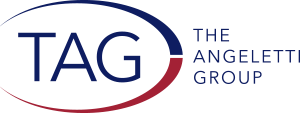As we begin the new decade, my colleagues and I continue to focus on engagement strategies to succeed in today’s rapidly shifting philanthropic landscape. See below for TAG’s 5 Trends to Address list:
- Transparency is King
With increased access to information regarding non-profit effectiveness and impact, donors are becoming more discerning and moving their philanthropic investments. As just one of many measures, look at alumni participation rates across the country; the decrease in donors is shocking! If that’s not enough, consider the free-fall in giving to religious causes. As recently as 1980, giving to religion totaled nearly 55% of all giving; today, it accounts for just over 31% (Source: Giving USA 2019).
At TAG, we attribute this shift to not a lack of interest, but a greater availability of information about the charities to which donors are giving. It’s easier than ever for donors to look up information about many nonprofits, and websites designed to grade charities are increasingly more prevalent. Show impact—or lose!
- Generational Differences
Baby boomers benefited from our country’s great institutions—and they traditionally made unrestricted gifts out of a sense of responsibility and loyalty. Today, many of those same great institutions exist under a cloud of distrust and appear slow to adjust while other, newer, and more agile organizations eat their lunch. Younger people do give…but they want to be involved.
Consider the following:
- Millennials care about impact and involvement
- 64% raise money for walk/run/cycling events
- 46% ask people to make charitable gifts instead of buying them birthday gifts
- An organization’s website is still the number 1 place to engage all donors, 40% of Millennials are engaged through a website vs 37% of Generation X (Nonprofit Source)
- Generation Z are engaged almost equally through social media (21%) and an organizations website (28%)
- Shifting Population and Demographics
What’s happening in your region…? Are people moving in? Out? And who are they? While many states are seeing some level of population growth, many immigrant and first-generation Americans look at philanthropy differently than did those we relied on a generation ago. Are you adjusting your messages and strategies?
- Remember John Gray’s book, Men are from Mars, Women are from Venus…? Read it!
Many of us continue to rely on the same male-centric engagement, recognition, and stewardship strategies—giving clubs, naming gifts, honors….Are they still working? Women’s share in wealth rose considerably over the 20th century; today women hold around 40% of global wealth—and that number is likely to rise! (Source: Credit Suisse, Global Wealth Report 2018). The 2018 U.S. Trust Study of High Net Worth Philanthropy reported that 93% of high net worth women vs 87% of high net worth men give to nonprofit organizations.
- Is Fidelity Really the World’s Largest Charity?
Contributions to donor advised funds (DAFs) rose by 20% to $37 billion in 2018. There’s a lot going on with donor advised funds. And there is noise in the system. Is more money going to non-profits or are DAFs a tax dodge for the rich? Can people fulfill pledges through DAFs? There’s no question that DAFs are a fast-growing, donor-centric tool Read TAG’s latest blog where we answer these questions and more to help you cultivate and steward donors who give through this important charity vehicle.
Beyond these Top 5, our nonprofit partners face many of the same trends, challenges, and opportunities as businesses and the world at large. Better digital analytics and targeting than ever before, artificial intelligence (sometimes even doing the job of gift officers!), and an increasingly global world mean the philanthropic landscape is far from static. What trends and changes do you anticipate will impact your organization in 2020 and beyond? Drop us a comment below and let us know if there are any other topics you’d like TAG to dive into!


